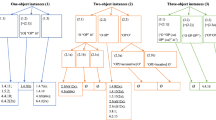Abstract
Given the importance of pravṛtti and nivṛtti as shaping ideologies in the Mahābhārata and a host of other Indic texts, a study of the occurrence of the uses of √vṛt in the widest possible sense is a desideratum for an understanding of both the Mahābhārata and its Mokṣadharmaparvan. The present contribution discusses concentrations of occurrences of √vṛt-words in particular passages and considers whether these are associated with the communication of specific doctrines. Both nominal and verbal forms of √vṛt, prefixed and unprefixed, are studied, with special attention being paid to the objects which they take; in particular, the grammatical cases used with the present participle vartamāṇa, are surveyed. It is concluded that √vṛt conveys the sense of “of operating or functioning in a particular state,” especially when used with a noun in the locative, thus differing from other verbs such as √as, √bhū and √gam. In addition, the greater frequency of √vṛt prefixed by pra- and ni-, as opposed to other prefixes, is noted, indicating how significant pravṛtti and nivṛtti had become as ideologies in our text.
Similar content being viewed by others
References
Bailey, G. (2005a). Contrasting ideologies in the Mahābhārata. In R. K. Sharma (Ed.), Dr. Satya Vrat Shastri Felicitation Volume (Vol. 2, pp. 581–606). New Delhi: Eastern Book Linkers.
Bailey, G. (2005b). The Pravṛtti/ Nivṛtti chapters in the Mārkaṇḍeyapurāṇa. In P. Koskikallio (Ed.), Epics, Khilas and Purāṇas. Continuities and Ruptures (pp. 495–516). Zagreb: Croatian Academy of Sciences and Arts.
Barua, A. (1949). The Peṭakopadesa. London: The Pali Text Society.
Fitzgerald, J. L. (2004). See under Fitzgerald in the General References.
Fitzgerald, J. L. (2006). Negotiating the shape of ‘scripture’. In P. Olivelle (Ed.), Between the Empires: Society in India 300 BCE to 400 CE (pp. 257–286). New York: Oxford University Press.
Mahābhārata. See under Fitzgerald, Smith, Sukthankar, and van Buitenen in the General References.
Manu, Manusmṛti. See P. Olivelle (2005) in the General References.
Proudfoot, I. (1987). Ahiṃsā and a Mahābhārata Story. Canberra: Faculty of Asian Studies, Australian National University.
Strauss, O. (1911). Ethische Probleme aus dem ‘Mahābhārata’. Giornale della Societa Asiatica Italiana, 24, 193–335.
van Buitenen, J. A. B. See under van Buitenen in the General References.
von Böhtlingk, O. (Ed., Trans.). (1971[1887]). Panini’s Grammatik. Leipzig: H. Haessel Verlag, 1887. (Reprinted from Hildesheim: Georg Olms Verlag, 1971.)
Wynne, A. (2009). Mahābhārata. Book Twelve. Peace. Volume Three. “The Book of Liberation.” New York: NYU Press & JJC Foundation.
Author information
Authors and Affiliations
Corresponding author
Rights and permissions
About this article
Cite this article
Bailey, G. On the Distribution, Use and Meaning of the Dhātu √vṛt in the Mokṣadharmaparvan and the Śāntiparvan of the Mahābhārata . J Indian Philos 45, 711–732 (2017). https://doi.org/10.1007/s10781-016-9292-0
Published:
Issue Date:
DOI: https://doi.org/10.1007/s10781-016-9292-0




